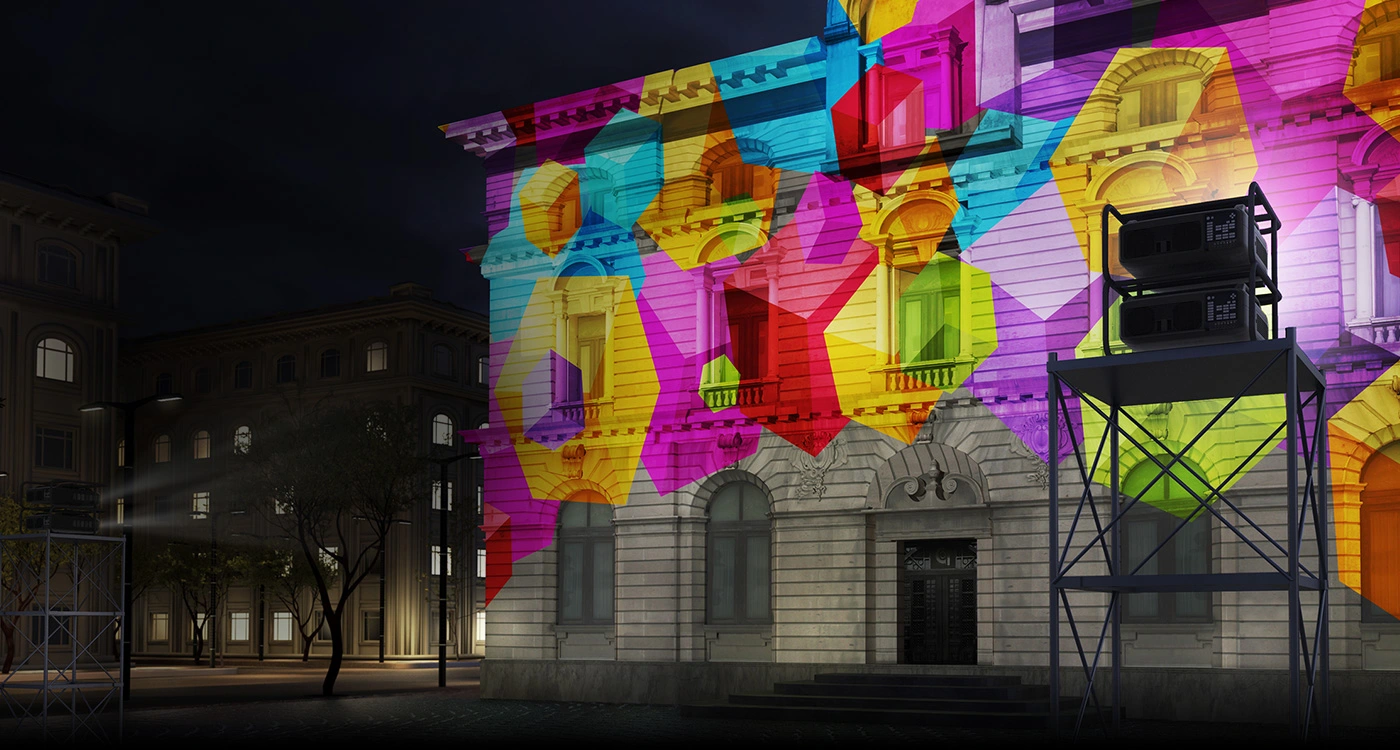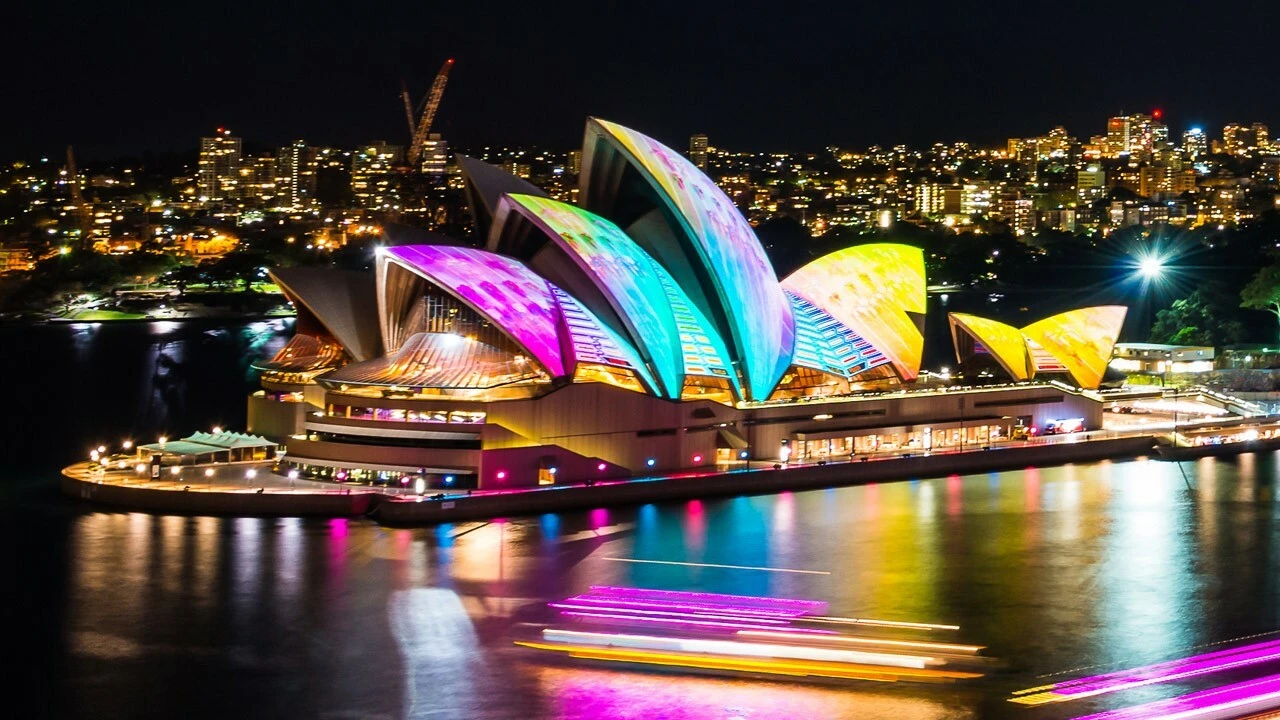Projection mapping can turn any surface into a dynamic display, allowing companies to create memorable experiences for audiences and ushering in a new era of experiential marketing
Imagine walking into a museum and seeing the paintings come to life, watching a concert where the stage transforms into different worlds or attending a wedding where the walls and ceiling are decorated with stunning visuals. These are just some of the examples of how projection mapping can create immersive and memorable experiences for audiences.
Projection mapping is a technique that uses projectors to map images or videos onto any surface, regardless of its shape, size or texture. It can turn any object or space into a dynamic display, creating illusions of depth, movement and interactivity. Projection mapping was originally developed for entertainment purposes, such as theme parks, concerts and theatre productions. However, it has since expanded to other domains, such as advertising, education, art and architecture.
In this blog post, we will explore the potential of projection mapping in a variety of applications, its different types and lots more.
Why Projection Mapping Has Become Popular
Projection mapping has gained popularity in recent years due to several factors. One of them is the advancement of technology, which has made projectors more affordable, portable and powerful. Projectors can now produce high-resolution, bright and colourful images covering large areas and adapting to different surfaces.

Image credit – Epson – Projection Mapping Illustration
Another factor is the availability of software and tools that make projection mapping more flexible, easier and more accessible. Various applications and platforms allow users to design, edit and control projection mapping content and calibrate and align the projectors with the target surface. A whole host of surfaces can be used for AV projection mapping.
Architectural features such as buildings, walls, landmarks, monuments, etc. can be mapped with projections that highlight their shape, texture and history.
Natural elements like water, trees, rocks, mountains, etc. can be mapped with projections that enhance their beauty, movement and meaning.
Objects and props such as cars, planes, sculptures, furniture, etc. can be mapped with projections that change their appearance, function and identity. For example, a car was mapped with projections that showed its internal components, features and performance during a launch event.
Some of the biggest venues where projection mapping has been successfully employed include:
- The Sydney Opera House, where projection mapping was used to create a spectacular light show during the Vivid Sydney festival in 2019.
- The Empire State Building, where projection mapping was used to display images of endangered animals and raise awareness about conservation in 2015.
- The Sagrada Familia, where projection mapping was used to celebrate the completion of the basilica’s main tower and showcase its architectural features in 2010.
- The Gateway of India, where projection mapping was used to welcome two NBA teams arriving in India for the first time in 2019.

Image credit – xchange.avixa.org

Image credit – Youtube
In the next section, we’ll look at the different kinds of projection mapping and associated real-world examples.
The Different Shades of Projection Mapping
Projection mapping has become popular due to the demand for more engaging and immersive experiences. It can create stunning visual effects that can captivate and surprise the audience, as well as enhance the mood and atmosphere of the event. It can also create interactive experiences, where the audience can influence or participate in the projection, such as by using gestures, touch or voice. Projection mapping can also be combined with other technologies, such as sound, lighting, sensors and augmented reality, to create a more holistic and immersive experience.
While projection mapping has been applied with great success at monuments, cultural events, houses of worship, museums and art installations there are wider applications possible with the technology.
- Corporate Events and Product Launches: Companies often use projection mapping during corporate events and product launches to create a dynamic and immersive environment. For instance, car manufacturers have projected mapping onto cars to showcase new features and designs in a visually striking manner.
- Cultural Celebrations and Festivals: Projection mapping is widely used during cultural festivals to transform buildings and monuments into canvases for storytelling. This not only enhances the visitor experience but also pays homage to the cultural significance of the site.
- Education and Museums: Educational institutions and museums employ projection mapping to create interactive and engaging exhibits. This technology can bring historical events to life or explain complex concepts in a way that is both informative and captivating.
- Entertainment and Stage Design: In the entertainment industry, projection mapping is used to enhance live performances, concerts and theater productions. It allows for dynamic stage designs that can change in real-time, adding depth and excitement to the performance.
- Retail and Fashion: Retail stores and fashion shows have adopted projection mapping to create unique shopping experiences and runway shows. By projecting onto mannequins and walls, they can display changing patterns and scenes that attract and engage customers.
- Personal Celebrations: Even at a personal level, people use projection mapping for events like weddings and parties to add a personalised touch. It can transform a simple venue into a magical space, tailored to the theme of the celebration.
Projection mapping is a powerful tool for storytelling and creating immersive experiences. Its ability to adapt to any surface and environment makes it a popular choice for anyone looking to make a lasting impression. Whether it’s for a global audience at a product launch or a more intimate gathering like a wedding, projection mapping offers a unique way to captivate and mesmerise audiences of all kinds.
The Benefits of Projection Mapping
Projection mapping can transform any object or space into a canvas for creativity and expression and can evoke emotions and reactions that are hard to achieve with other media. It can also create interactive and participatory experiences, where the audience can become part of the projection and can influence or contribute to the outcome.
It can not only enhance branding and advertising by creating memorable and engaging visuals that showcase the company’s products, services, values and vision but also tie together an event theme and create a cohesive and consistent atmosphere that reflects its identity and message.
Projection mapping can transform any space and save costs on traditional set design, as well as offer more flexibility and creativity in choosing the venue and the content. It can impress and captivate the audience, as well as increase their participation and retention, by providing them with a realistic and immersive experience that transports them to different realities, places or times.
Ready to transform your office and commercial spaces with state-of-the-art projection mapping? Join the numerous corporations that have trusted Actis Technologies for their AV technology needs and get in touch with us at 022-30808000 today.


